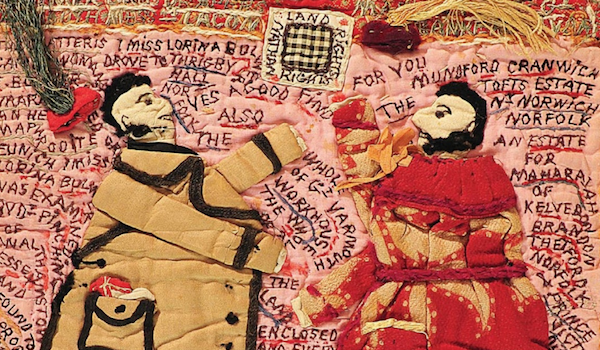
All Better

The use of textiles as occupational therapy – a way of stilling the mind by busying the hands – has a long history. The manifestations are as varied as the individual needs of the person who made them: some are silent creative acts, the creation of something beautiful, while others are testimony, visual expression of an inner voice…

Anna Margaretta Brereton lived with her husband at Brinton Hall, Norfolk. The couple had eight children born between 1781 and 1796. In 1800 Anna’s beloved eldest son John died of a fever aged 14. In a sermon given at her funeral it was noted that his death 'plunged her into an abyss of sorrow, which had well-nigh destroyed her mental powers, and nearly brought her body to the dust.'

But after a year of intense mourning friends and family noticed that she had begun to design a counterpane and encouraged this project with gifts of glazed chintzes. The process of making was so beneficial that Anna continued producing a full set of bed-hangings – counterpane, curtains, valances, header, tester and swags. Anna worked intensively on the hangings between 1801-5, when family history relates that she was restored to health and able to recommence her duties in the parish. The design and execution of the hangings is exquisite, using coffin hexagons and broderie perse appliqué in a bewilderingly complex design that would have taken all her concentration to design and make...
You can read this article in full in Selvedge 54.
